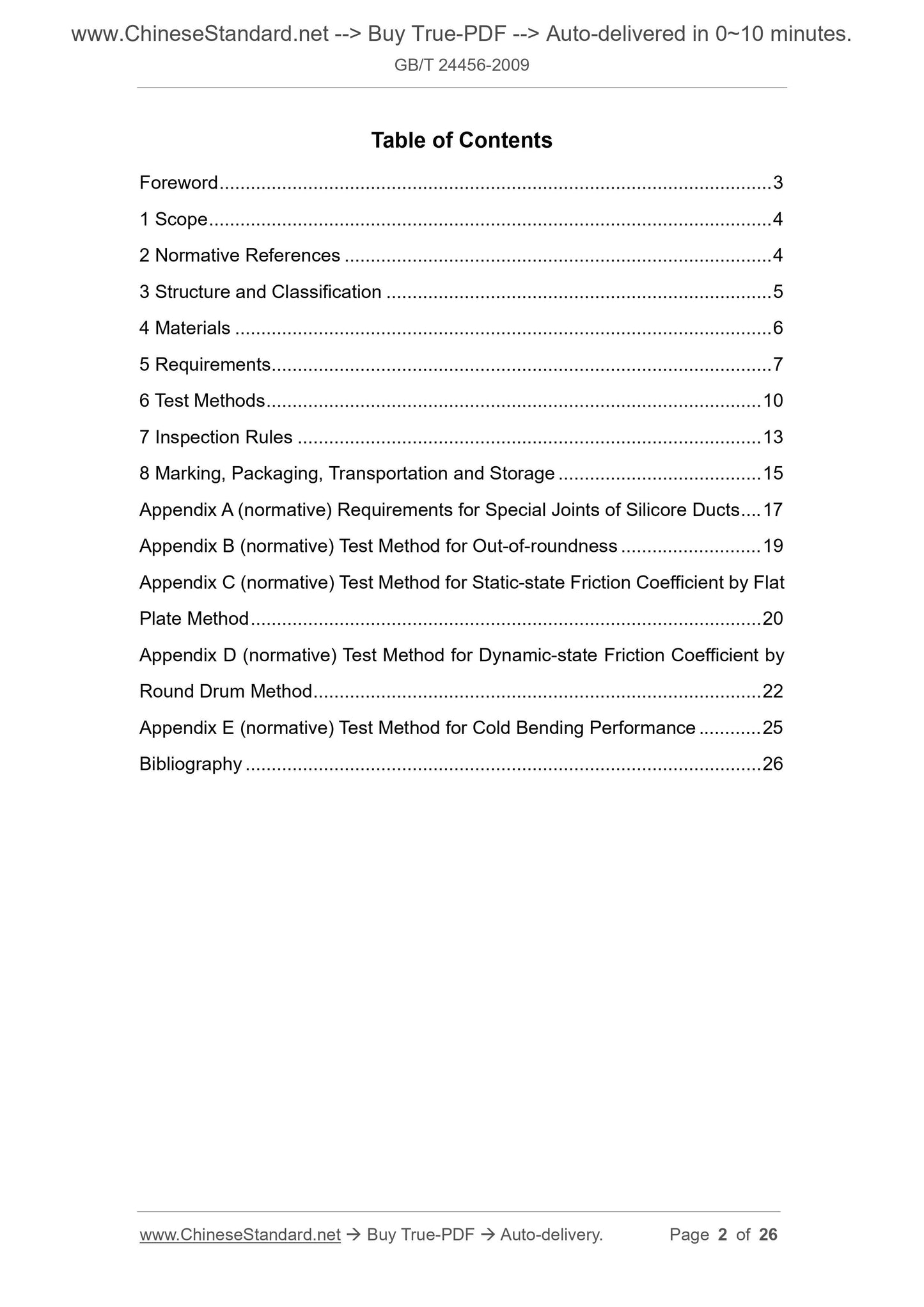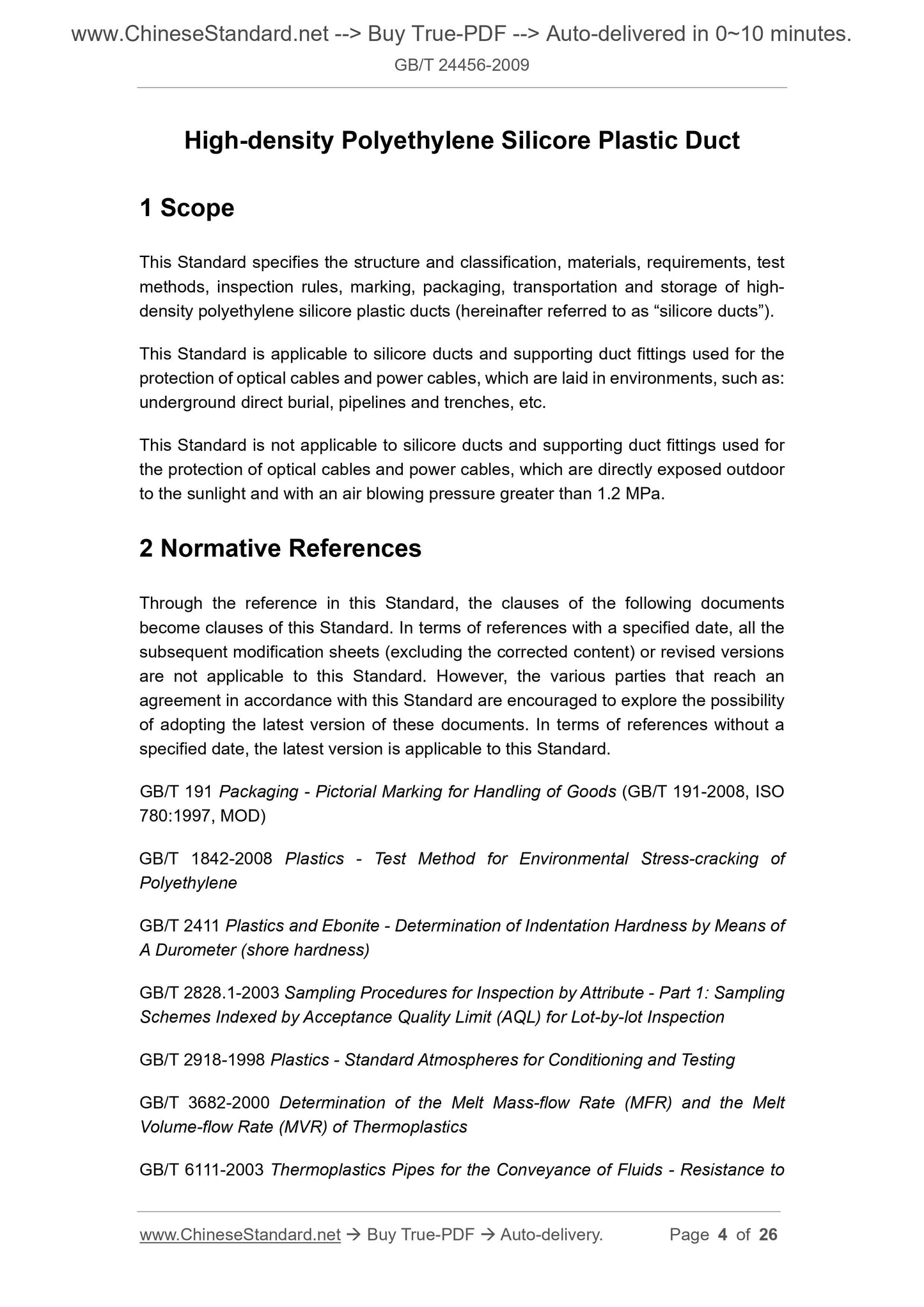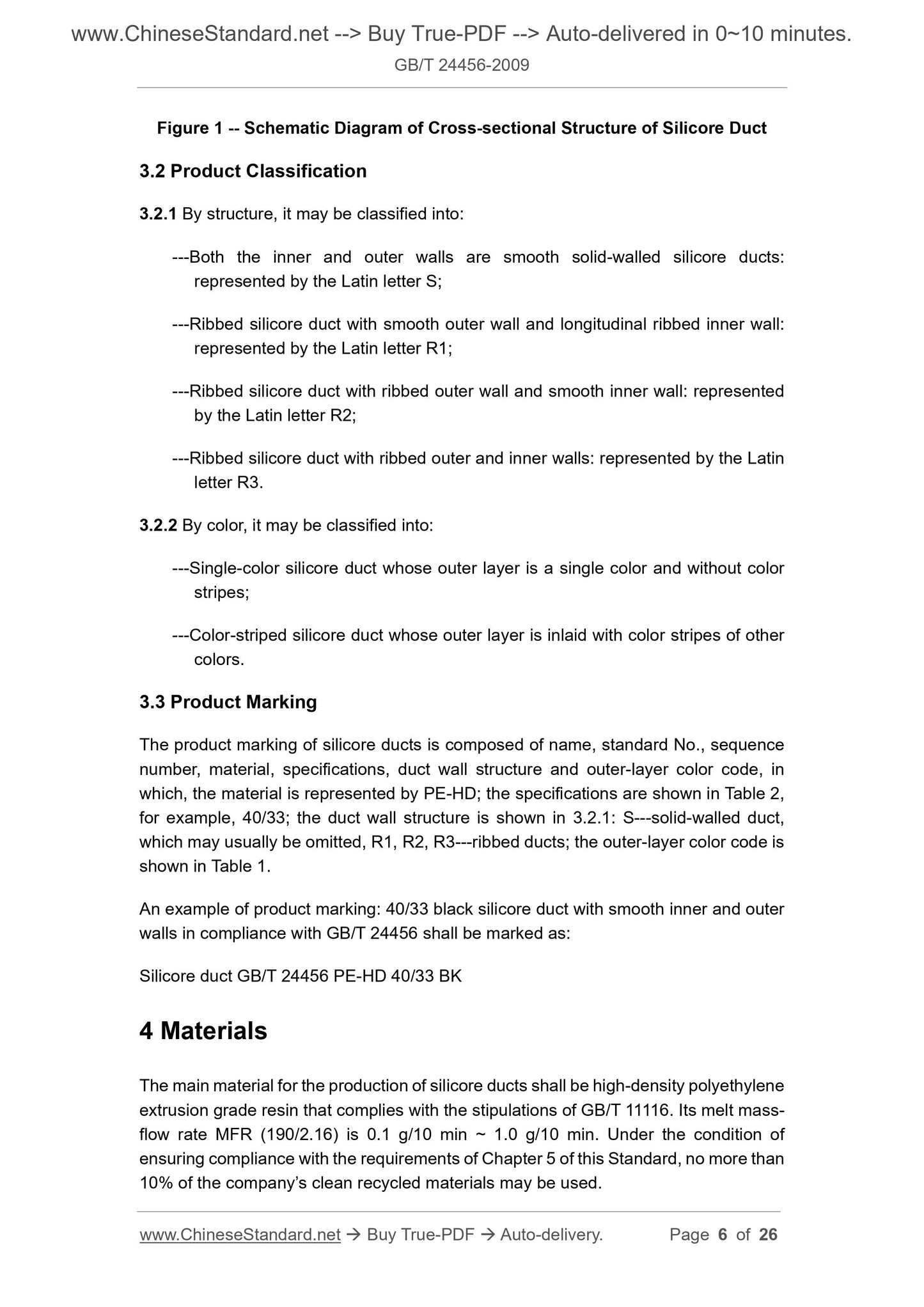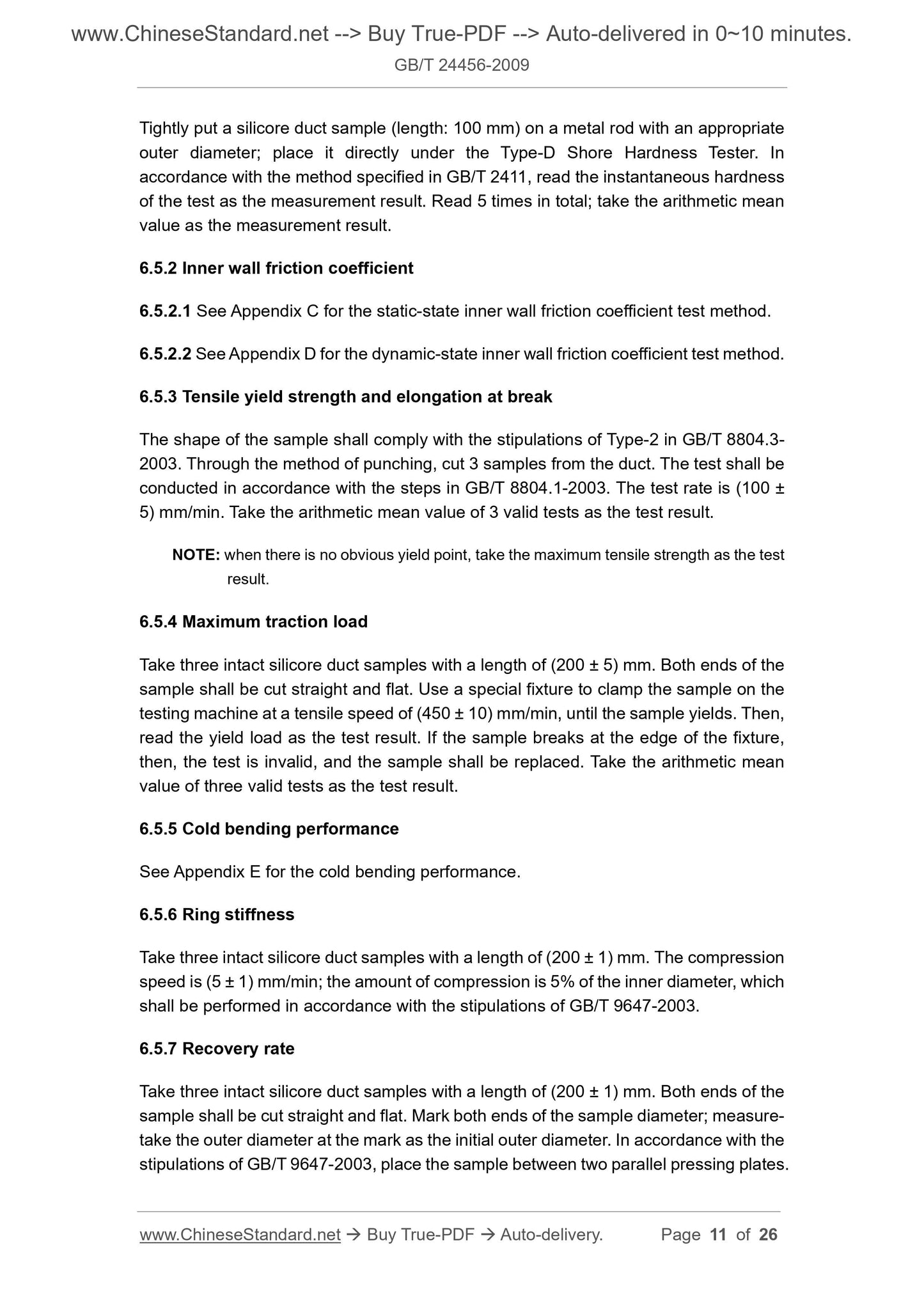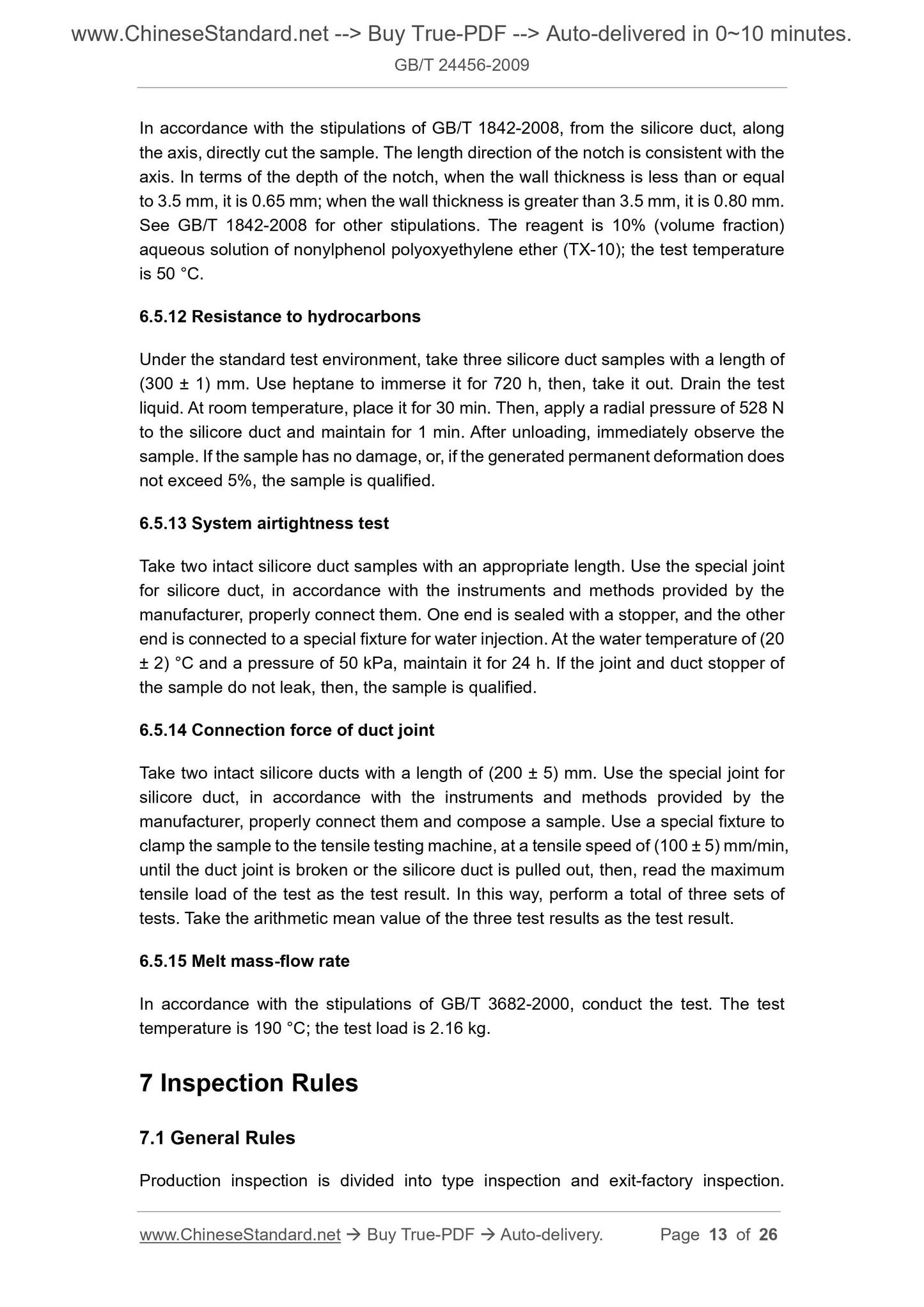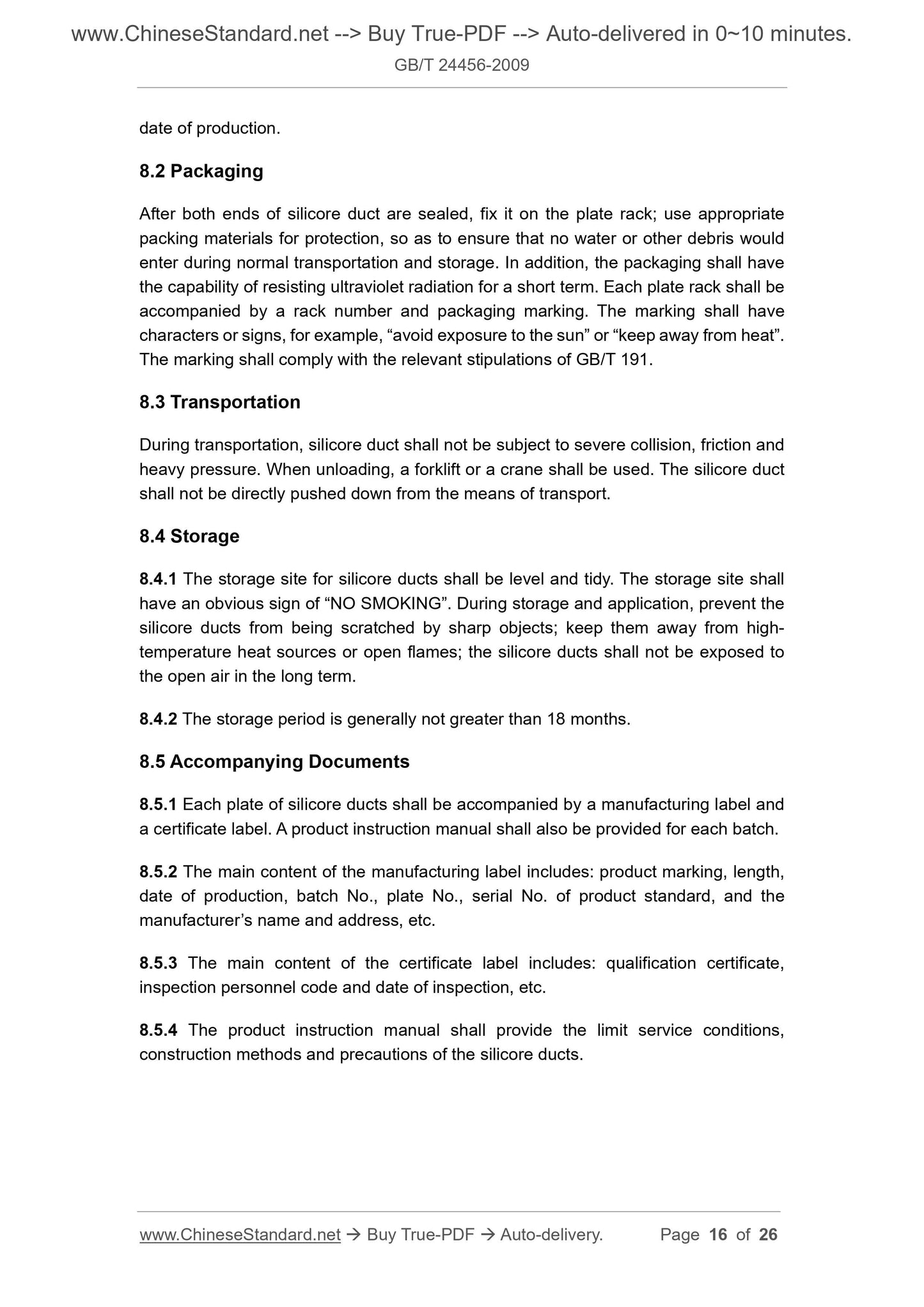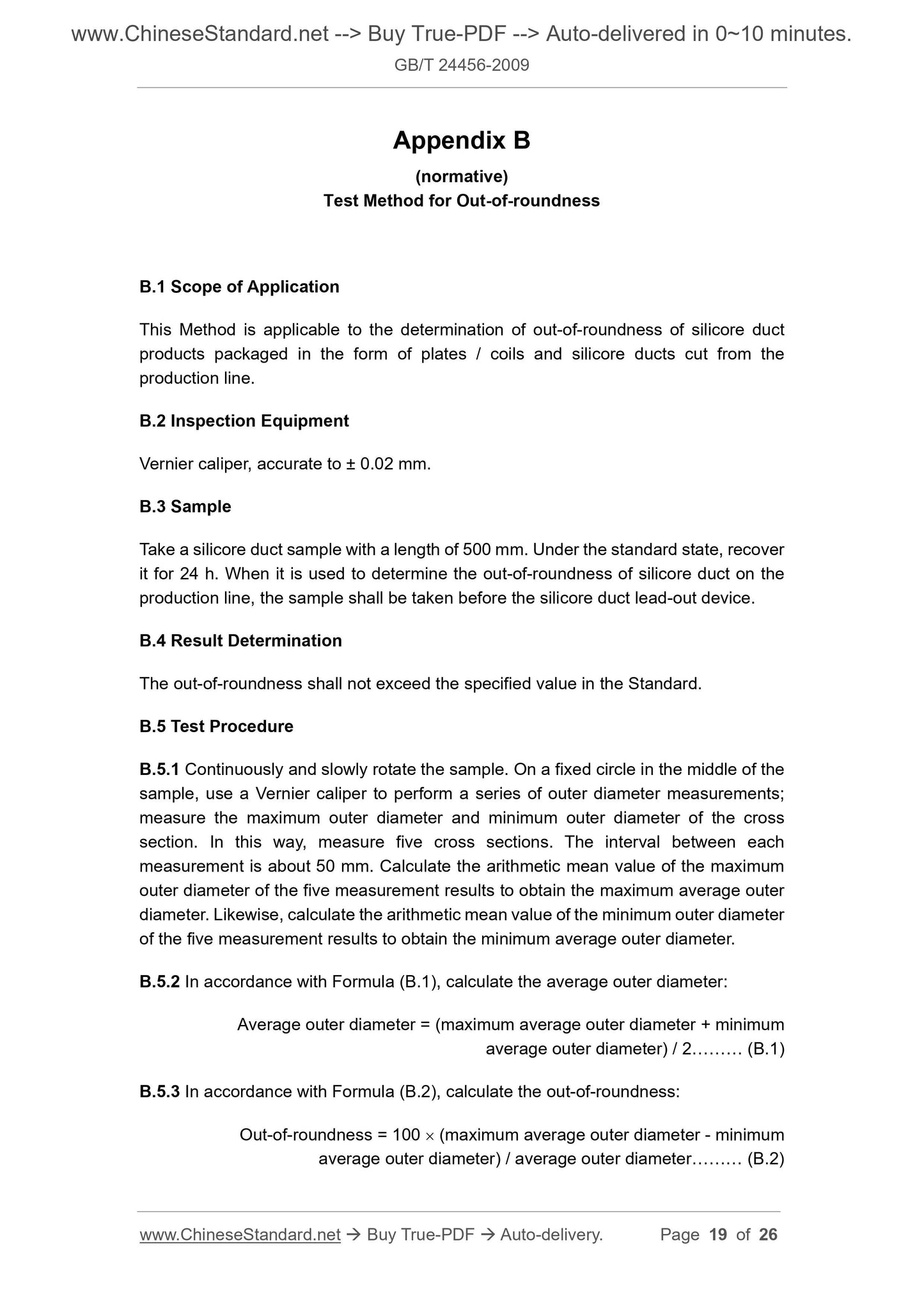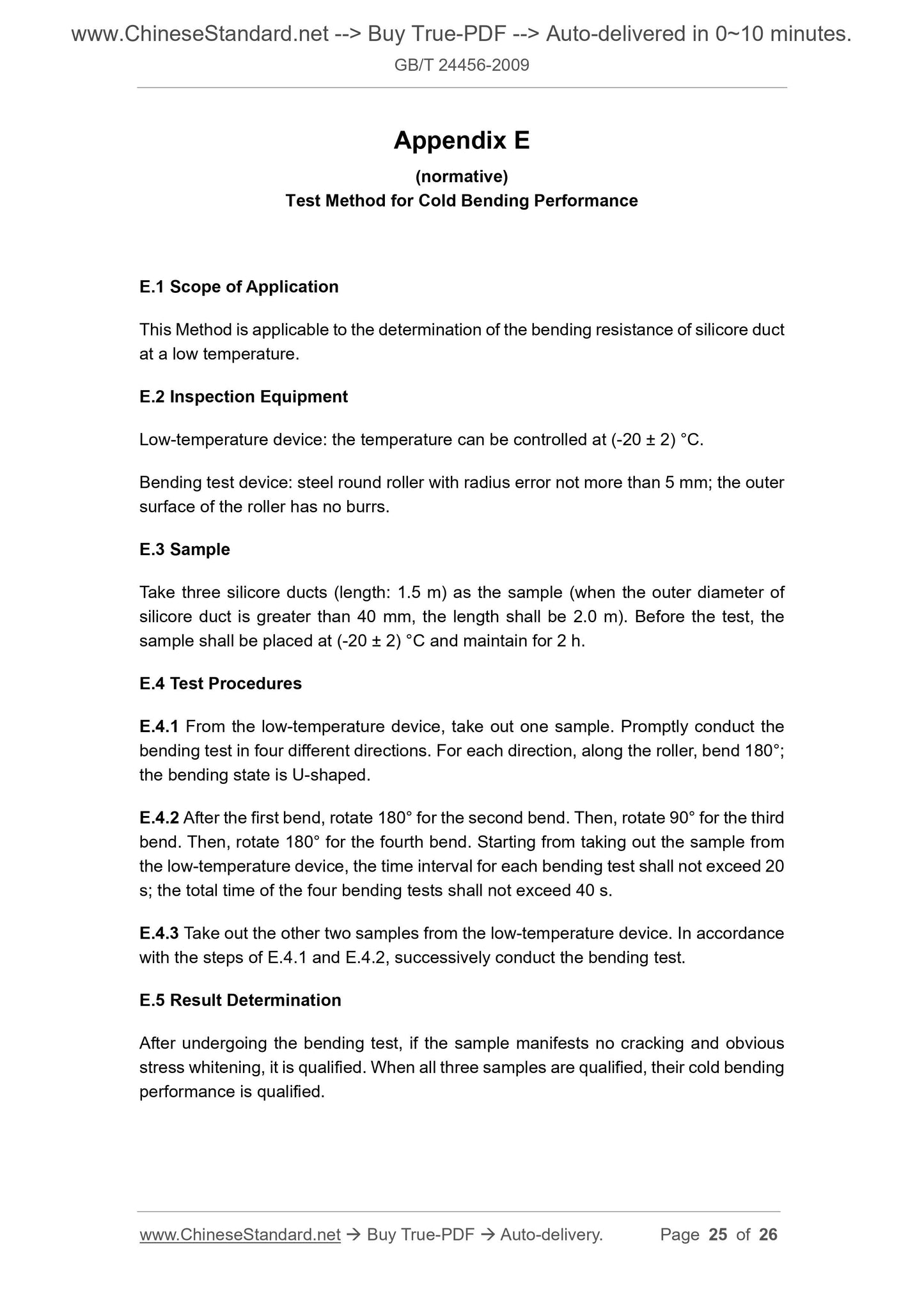1
/
of
10
www.ChineseStandard.us -- Field Test Asia Pte. Ltd.
GB/T 24456-2009 English PDF (GB/T24456-2009)
GB/T 24456-2009 English PDF (GB/T24456-2009)
Regular price
$350.00
Regular price
Sale price
$350.00
Unit price
/
per
Shipping calculated at checkout.
Couldn't load pickup availability
GB/T 24456-2009: High-density Polyethylene Silicore Plastic Duct
Delivery: 9 seconds. Download (and Email) true-PDF + Invoice.Get Quotation: Click GB/T 24456-2009 (Self-service in 1-minute)
Newer / historical versions: GB/T 24456-2009
Preview True-PDF
Scope
This Standard specifies the structure and classification, materials, requirements, testmethods, inspection rules, marking, packaging, transportation and storage of high-
density polyethylene silicore plastic ducts (hereinafter referred to as “silicore ducts”).
This Standard is applicable to silicore ducts and supporting duct fittings used for the
protection of optical cables and power cables, which are laid in environments, such as:
underground direct burial, pipelines and trenches, etc.
This Standard is not applicable to silicore ducts and supporting duct fittings used for
the protection of optical cables and power cables, which are directly exposed outdoor
to the sunlight and with an air blowing pressure greater than 1.2 MPa.
Basic Data
| Standard ID | GB/T 24456-2009 (GB/T24456-2009) |
| Description (Translated English) | High-density Polyethylene Silicore Plastic Duct |
| Sector / Industry | National Standard (Recommended) |
| Classification of Chinese Standard | G33 |
| Classification of International Standard | 83.140.30; 23.040.20 |
| Word Count Estimation | 20,248 |
| Date of Issue | 2009-10-15 |
| Date of Implementation | 2010-03-01 |
| Quoted Standard | GB/T 191; GB/T 1842-2008; GB/T 2411; GB/T 2828.1-2003; GB/T 2918-1998; GB/T 3682-2000; GB/T 6111-2003; GB/T 6671-2001; GB/T 6995.2; GB/T 8804.3-2003; GB/T 8806-2008; GB/T 9647-2003; GB/T 11116; GB/T 14152-2001; GB/T 8804.1-2003 |
| Regulation (derived from) | National Standard Approval Announcement 2009 No.11 (Total No.151) |
| Issuing agency(ies) | General Administration of Quality Supervision, Inspection and Quarantine of the People's Republic of China, Standardization Administration of the People's Republic of China |
| Summary | This standard provides high-density polyethylene silicon core pipe (hereinafter referred to as "silicon core pipe) structure and classification, materials, requirements, test methods, inspection rules and marking, packaging, transport and storage of the standards applicable to buried underground., laying cables under other environmental groove, , pipeline. cable protection with silicon core pipe and a pipe This standard does not apply to outdoor direct exposure to sunlight as well as fiber optic cable blowing a pressure greater than 1. 2MPa, cable protection with silicon core pipe and supporting tube. |
Share

